article A Work of Understanding
On Hans Zimmer's The Thin Red
Line
The Thin Red Line is one of the landmark scores in the history of film music. There aren't many composers who have such works on their belt. We can talk about Max Steiner and his King Kong, Alex North and A Streetcar Named Desire (first time a film was underscored by jazz) or the triumphant return of orchestra in John Williams's Star Wars. Hans Zimmer, the composer of The Thin Red Line, has a few of such breakthroughs in his career, like Black Rain (originating a new action style), Crimson Tide (first full score in that style, Backdraft was somewhat immature). No matter how much greater or smaller landmarks happened in film music, one must be remembered. The Thin Red Line changed the character of the genre. It was appreciated years later, when its influence was of note. Today, except The Prince of Egypt and Gladiator, it is seen as German composer's biggest achievements.
The landmark character of the score is not the subject of this article, which is an essay in interpretation in context of film and its album, because, in my opinion, even in this sense, the German created an exceptional work of art. Exceptional in its artistic message, the role it plays in the film. Many factors influenced it from the collaboration with director Terrence Malick (which Zimmer holds in very high regard), to time he spent on writing the score and that process itself. Thus we will start with the facts.
FACTS
Hans Zimmer was hired to score The Thin Red Line very early. With big probability one can say it was in 1997. Possibly, he was very adamant to take the project. Terrence Malick, the film's director, made three movies already and all of them are seen as masterpieces. The adaptation of James Jones's classical novel after a 30+ year break. I think that without much exaggeration one can say that Hans Zimmer was one of the first to be hired for this movie.
He received a very difficult task. Malick demanded all (or most of) the score to be written before the production started, because he wanted to play it on the set to get himself and the crew in the right mood. It's hard to say whether it were electronic demos or orchestral recordings. The director also asked him to minimalize the amount of electronic instruments used in the score and resort mostly to a live ensemble. Devoid of the context and his usual tricks, Hans Zimmer had to find a new language to live up to the very hard task. His "help" though was classical music. Renowned for his replacement of composed music with classical pieces, Malick (on Days of Heaven, most of Ennio Morricone's music was replaced with the music of Camille Saint-Saens and in his most recent The New World he uses Wagner and Mozart in many places, which led James Horner to frustration) most likely asked the German composer to refer to certain pieces, which can be noticed in the final score. Still, in one of the early scenes Gabriel Faure's Requiem is heard (the 'In Paradisum' movement) and later, during the village massacre, we can hear Charles Ives' "An Unanswered Question", replacing Zimmer's reference to Wagner's "Prelude" to the drama Lohengrin.
Zimmer started working. Malick is said to have spent the whole pre-production in Santa Monica, where he established his production office for the film in the Media Ventures complex. He and Zimmer regularly argued on the corridors, but the composer says that they were very good arguments. For help, the German composer asked John Powell (who later took over the scoring duties on Endurance, a documentary produced by Malick) and Gavin Greenaway. Later, for undisclosed reasons, much of the music was rewritten Jeff Rona, who couldn't be officially credited for, as Rona put it, "political reasons" (John Powell's and Francesco Lupica's tracks are officially mentioned in the soundtrack part of end credits and the only credited "additional music" composer is John Powell), so he invented the phrase "visceral ambience". The music was recorded in Fox's Alfred Newman studios, one of the best in Hollywood. It was performed by Hollywood session musicians (today known as Hollywood Studio Symphony). The string section is said to have been tripled. Except traditional orchestral instruments, Zimmer added Tibetan drums, bells and chimes, three harps, a taiko drum and religious chants. He aided himself with Polynesian choirs, who chant their Christian songs in a pigeon English, and slightly Vangelis-like sounding electronic instrument called cosmic beam, performed by Malick's friend Francesco Lupica. Lupica himself improvised one of the tracks, called "Sit Back and Relax".
The film itself got mixed reviews. I believe it was completely misunderstood, which led some critics may say it's inherently incoherent and not understand the shots of nature. Hans Zimmer's score though was reviewed as very good, sometimes seen as the only coherent element of Malick's movie. As we will prove, this was one of the score's objectives. Alas, The Thin Red Line ended up to be the biggest loser in 1999 Academy Awards. It got no awards despite 11 nominations (including the score). Another big loser of that ceremony was the composer Hans Zimmer, who also lost the comedy/musical score Oscar to Stephen Warbeck (the German composer was nominated for his other great score, The Prince of Egypt).
There are multiple releases of the score. The basic one of course is the official album released by RCA Victor, which consists of less than an hour of score. An interesting fact is that it was released in a different way than usually. The compiler, Gavin Greenaway, included some material that wasn't used in the final film. Those include the beginning of "The Lagoon", final part of "Journey to the Line" (the high strings), "Air" and "Stone in My Heart". A year later, RCA released an album with the Melanesian chants. It was produced by one of Media Ventures' technicians, Claude Letessier. Later, an expanded score bootleg appeared. The so-called Sakura edition is nothing more than the original release with some dialogues added. There is also a two-CD complete score, but it's not perfect either, since it features the film's sound effects in the mix. This article is based on the official release, but sometimes I will refer to the complete score, because some of the most important cues weren't released. Despite that, the official release is sufficient and definitely recommended.
Based on these facts, we can say that Hans Zimmer, despite constant arguments, had a great atmosphere to work in. With his usual tricks taken away he had to find a new language, which influenced himself and film scoring in general. It wasn't until then when his neoclassical tendencies were put in a new dimension. Lack of the film's context made him also create an abstract work, without clear references to the film's reality, which let him concentrate on its philosophical message. This is why, in my opinion, The Thin Red Line goes beyond usual film music and becomes almost a philosophical treatise. As the film shows though, this is only one of possible levels of the music's reception.
TRANSCENDENCE
The specific process of the scoring of the film also influenced the role it plays in the movie. Creating the music before the production starts isn't a novelty in the industry. A notable example is Ennio Morricone and his spaghetti western music written for Sergio Leone. How did Hans Zimmer's score influence its context?
It'd be banal to say that usually the film story is led by the camera work. What it shows, defines the way we perceive the events and the visual elements are the narrator. In The Thin Red Line it's different. This film can be interpreted on multiple levels, from a traditional one (ie. as a war movie), psychological one and philosophical one. The director decided to trust the music. The filmmaking process was conformed to the music. This makes the score the subject of the movie.
It must be noted, that Zimmer's score has a transcendent character in context of the others. It goes beyond the happenings on screen, sometimes even against them - dynamic, dramatic and brutal scenes are often underscored by a restrained adagio. It definitely changes our perception of those scenes. It doesn't matter how many people die (which is shown by Malick with relatively little blood, often people just fall). More important is what our characters are going through, or, to be more precise, what the collective character is going through. The German composer approached the movie in a more European, psychological rather than purely dramatic, way. It makes the characters even more human (Malick, with an amazing consequence, shows both sides of the as a bunch of terrified people - not really knowing what they are doing and why; they merely want to survive).
It all would be much simpler if the film's main character wasn't a collective. Of course, the off-screen voices we hear repeat (mainly Bell and Witt), but the intuition tells us that all those reflection are shared by all the soldiers (more complicated in case of Bell, a character we seemingly know best). The composer had to address that, too. Many critics of the movie praised Zimmer for giving coherency to the movie and that's how it is. The music is beyond the story, it tells the story. One of the roles of a narrator (subject) of a literary (or film) work is to give a voice to particular characters. Hans Zimmer did more here, except giving people a voice, he creates the right atmosphere for us to listen to them.
Let's see how Hans Zimmer created the subject. We already said that not only it gives voice, but also gives the right atmosphere for it to be listened. That means we deal with an understanding subject. It sympathizes with the characters and kind of lets them say their regrets. Thanks to that fact, the viewer notices those reflections and they have the necessary emotional context (on the background of nature shots). The soldiers' monologues rarely refer to recent events, they are abstract and have a philosophical character, from questions about evil's ontology (ie. its nature and existence) to ethical reflection ("I killed a man... That's worse than rape..."). Simple soldiers look for answers for the most complex and basic questions ('What is evil? Who we are?'). They are more moving because they are put in the context of war. The subject seems to observe the events shocked and hence gives its characters so much compassion and warmth.
WAR
After a general characteristics of The Thin Red Line's score, let's consider it on three levels. The score, just like the film, can be perceived on three levels - as a war drama, as a psychological drama and a philosophical treatise. Let's start with the simplest, surface level. How does Hans Zimmer's music work as a war movie score?
The answer is short: untypical, but functional. Zimmer decided to avoid traditional war score elements. We won't hear heroic trumpet solo (which is interesting, that's one of the composer's trademarks), military snare rips or action music. The score works differently, addressing emotions, but never going beyond the level of too much drama, or even pathos, which is another step back from the traditional convention.
I think, the best way to show that would be comparing this score to John Williams' music to Saving Private Ryan. Steven Spielberg's classic (and also one of the American director's best movies) was the main competitor of The Thin Red Line on the road to the Oscars. In its musical approach, both movies are completely different. Williams, on the director's demand, composed very little music, avoiding underscoring action scenes (which was good, any music in those scenes would take away all their power).
Basic differences also exist in the traditions the scores refer to. Williams wrote a largely Americana score, most notably referencing Aaron Copland, author of the famous "Fanfare for the Common Man", which was heavily copied in other scores too (most notably James Horner in Clear and Present Danger and Jerry Goldsmith's theme to Air Force One). Both scores are based on non-thematic underscore, but Saving Private Ryan has the legendary "Hymn to the Fallen" (one of the best themes of the 1990s, at least in the composer's career). Hans Zimmer decided to go with more European sources, for example Wagner ("Journey to the Line", this part of the track was replaced by Charles Ives' "An Unanswered Question" in the movie) or Mozart ("Lacrimosa" in "Village"). The general construction of motifs is based on the American composer Samuel Barber (the famous "Adagio for Strings").
Except for the "Hymn", Williams's ensemble was rather modest. Unlike Zimmer, he based his scores on soloist brass performances - trumpet (frequent collaborator Tim Morrison), French horn and also snare. The main difference between the usual war scoring and Williams's music is the lack of action music in Saving Private Ryan, which will become a staple of Spielberg's serious dramatic music, like much of Munich). Reference to the Copland tradition determines the sound and expression of the soundtrack. It's full of honor, solemn, with "Revisiting Normandy" being a notable example.
Zimmer took a completely different path. There is no patriotism at all; in the movie we won't see the American flag, which appears a few times in Spielberg's drama. The characters' nationality doesn't really matter. Malick treats both sides in an objective way (some of most shocking scenes in the movie depict scared Japanese soldiers, they don't differ much from our main characters, more, they are closer to insanity than the Americans). Zimmer's music isn't objective, but, we can say, intersubjective - it collects multiple points of view. It doesn't mean that the score is completely devoid of militaristic elements. The beachhead landing sequence is underscored by a simple, military rhythm, though this time performed by taikos rather than snares. This cue is unfortunately missing from the bootleg or lost in the film's sound effects.
We shall return to the question: What sort of war score Hans Zimmer's music is? As we said, untypical, but functional. After the changes made to war cinema after Saving Private Ryan (which was sort of a breakthrough, the viewer was never really immensed into battle before), I think, emotion-based and devoid of pathos Zimmer score would do quite fine, especially that recently the filmmakers concentrate more on interpersonal relations than series of big battle sequences.
FEAR
On psychological level, Hans Zimmer's score to The Thin Red Line is a study of fear. It can be heard immediately in the first track of the official album. Instead of having a snare rhythm or a big march, the score starts with a simple sampling, similar to wind blow. We are immensed into the new world by an organ chord. It's an uncertain world, just as uncertain our characters are. Also worth noting is the dark, scary even, march-like motif. The question is what was the motif written for. I think that it's Colonel Tall's theme (the Nick Nolte character). This character can't be regarded as fully negative though. His inner voice (the Colonel is heard off screen a few times too) shows that he has a lots of complexes and they may be the main reason behind his behavior.
Another proof for the fear study theory is "The Lagoon". The bass chants starting the track may be regarded as quite scary. They don't appear in the final film, they may be one of the cues which were rejected by Malick during editing. Next, a tremolo appears. The trembling sound of strings isn't anything particularly new in film scores, but it's always been effective. Listening to this particular track, we can notice how thought out this score is. Also notable is another motif, which Hans Zimmer will reuse a few more times - in Hannibal and Pearl Harbor. The German composer used a similar method to the Russian legendary composer Dmitri Shostakovich. Calling that a reference could be an overstatement though. Both tend to use church scales, which, in case of The Thin Red Line, makes the not very intense music gain authority and dramatism. It's a simple, but effective, technique.
Both sides of the conflict (or in this case, the hill) have one thing in common. Everybody is terrified. Nobody really knows what's happening. This fear element is also present in Zimmer's score. One must remember though that the composer took the role of understanding subject. The characters' fear is not expressed directly, but filtered through the subject's empathy, hence it's always combined with sympathy. It treats the soldiers with care. Here, we can see an element that Malick surely wanted. The music takes the characters' point of view, listens to them, but never loses it own voice. More, as I already said in the chapter about subjectivity, the score has a transcendent character over the movie, It's the music that lets the characters speak, gives them voice.
Let's look at two character which both Zimmer and Malick give more emphasis on. First of them is the commander of the Charlie Company, captain Staros. The character, played by Elias Koteas, is a very religious person. One of the most moving scenes in the movie is when the captain ardently prays not to betray God and his men. The melody used as his theme wasn't composed by Zimmer. It's a traditional folk hymn called "Christian Race". In the composer's arrangement, it's a simple and pretty sad melody. The character is a sensitive person who "doesn't like when his men get killed". The composer accentuates this side of his personality by arranging the hymn for strings and Ken Munday's basoon, which sounds a bit like a sobbing human voice. That makes it much more moving.
The second character is Private John Bell, played by Ben Chaplin. He is a soldier who very much loves his wife, whom he left in the States. His reflections are mostly about love and are combined with flashbacks of love scenes. One of tracks dedicated to him is John Powell's "Beam", which is one of the darkest (along with "Air") tracks in the whole album. It starts with Tibetan bells backed by subtle electronics. It's the first piece when Francesco Lupica's Cosmic Beam is used. The English composer wonderfully combines suspense (Bell goes on a recon mission, to see where the bunker, covering the hill, is) and sexuality (it's shown interchanging with a love scene flashback). The second cue is the one underscoring the scene when private Bell receives a letter from his wife, asking for a divorce. A part of the underscore was released on the original RCA album on the second half of The Lagoon. It would be better though to look at the whole piece, as released on the bootleg - the track is called "An Inconceivable Letter". It's a simple touching melody based on a simple, quite often utilised in this score, rhythm. The melody is performed by the oboe and the rhythm is performed by strings and bassoon. Zimmer treated this scene with a lot of sensitivity for both Bell and his lonely wife, who fell in love with another man.
QUESTIONS
Hans Zimmer's score has also a third level. The reflections of Malick's characters concern serious philosophical problems. More than the fact that in such a situation everyone could ask them (kudos to Malick for writing them in a simple language), they also serve as the movie's message. In my opinion, above all, The Thin Red Line is a philosophical treatise, an essay asking many questions (there are no answers given) regarding the world's evil. The key to understanding is the collective, that is the film's main character.
The original RCA Victor release is enough to understand the philosophical aspect of Zimmer's score, thus Gavin Greenaway's album compilation deserves praise. Generally, Hans Zimmer is known for his well thought-out albums (too long tracks early in his career is a different issue), concentrating mostly on showcasing his vision of the score and film's message rather than chronological film order. The Last Samurai is a good example here, on the album the score delicately goes from restraint (with the sole exception of track two, which presents the action scoring convention) to dramatism, showcasing the story of an American who finds himself in 19th Century Japan. The track titles showcase the kind of abstraction we are dealing with. Let's take a look, with the exception of the song "God Yu Tekem Laef Blong Mi". Three are connected to rather unspecified places (though in theory known, shown by the use of the definite article "the") - "The Coral Atoll", "The Lagooon" and "The Village". One of the titles has a purely informative character - the famed "Journey to the Line", two may be interpreted as quotes, though none of them appears in the movie - "Stone in My Heart" and "Sit Back & Relax". The final four consists of single words - "Light", "Beam", "Air", "Silence" - and they are pretty abstract.
Let's get back to the questions stated by the film's characters. What are they about? Malick mostly uses the opposition humanity-nature (nature isn't reflected on by the characters, it, amazed, looks at the whole situation, which is shown through shots taken almost directly from a nature documentary), except that war and love are important notions, shown as opposed to each other. The characters ask questions about the nature of evil, whether we are one collective soul. The role the music plays is creating an appropriate emotional context. Every voice deserves respect. Of course, Zimmer doesn't answer the questions, his music only augments their relevance. Often, the offscreen monologues appear on top of shots of nature. Those, sometimes almost still life, images harmonize with existential reflections expressed in context of restrained, sad and empathetic score. Now, let's look at certain tracks.
"Light" starts with a simple motif. It's calm, almost stoic in nature. The general mood of the whole track is sad, but the sadness has some warmth to it, I'd even say elegiac. One of basic advantages of Zimmer's score is because of the creation of the understanding subject. Even in most dramatic scenes, the composer doesn't forget about creating an intersubjective point of view. One can say, he accompanies the soldiers to the frontline, listens to them, pats them on their shoulders, tries to encourage them. Above all he treats their doubts (as a collective and every one of them as an individual) seriously. It's important to the already defined concept of understanding subject. "Light" has a descending motif, which has an almost stoic character, even though there is nothing stoic to the story.
One of The Thin Red Line's most important tracks is the famous, if not legendary, "Journey to the Line". The ingenuity of this track stems from its simplicity. Three-note motif repeated in four chords. It sounds banal and today this and "Burning Bush" from Prince of Egypt is regarded as Zimmer's most emotional track in his whole career. Where does its strength lie? This track shows that elegant simplicity is sometimes better than huge technical complexity. "Journey to the Line" is the most epic track of the whole score. I think that it has as much wisdom, as it has emotions. Even though it underscores a bloodbath (attack on a Japanese village), there is a lot of beauty, but that doesn't mean that Zimmer glorifies violence. On the contrary, "Journey to the Line" is tragic and full of understanding for both sides of the conflict. This is the only situation where the composer is completely objective, doesn't take multiple points of view at the same time. It doesn't mean it's simply underscoring the sequence - the score doesn't lose its character of the understanding subject, which is unable to take any point of view in this tragedy.
One of the most interesting aspects of the music of The Thin Red Line are the Melanesian chants that are sung by the inhabitants of the village depicted in the beginning of the movie. One of them, "Jisas Yu Holem Laef Blong Mi", was even rearranged for string orchestra by Klaus Badelt ("Melanesian Life II" on the bootleg; "Melanesian Life I" is a part of Gabriel Faure's "In Paradisum" from his beautiful Requiem). The Melanesians are living in a sort of idyll. This is the only place where Private Witt (one of the main characters, played by Jim Caviezel) feels safe. Everybody loves each other, there are no fights between children. Only when the Americans find him and pick him up, the film becomes dark. The chants are a part of the idyll. It's good, simple religiosity, full of mutual love and that's what the chants are like.
CONCLUSIONS
The Thin Red Line is an outstanding movie. I must say that each time I watch it (and I watched it for the, I think, fifth time to write this article) it impresses me the same. The kudos go to Malick for creating an original vision of war, to the actors (especially Caviezel, Ben Chaplin, Sean Penn and an exquisite Nick Nolte as Colonel Tall), to the genial cinematographer John Toll and to the Hans Zimmer score. All of this combines into a (contrary to what may seem) coherent philosophical work which is outside of any known genre. The film was seriously helped and enhanced by the musical concept of understanding subject, which, in my opinion, is quite novel. It is very rare that music narrates a movie, especially in a psychological way. The German composer showed his European soul on this project by writing a score that concentrates on characters' emotions and the overall message rather than building drama. It's one of the cases where most definitely less is more.
The last question to answer is whether Zimmer's score is autonomous or not. This analysis showed that the music can be analysed on multiple levels. For a fan of the film this won't be difficult to discover, they are so deeply rooted in the music that it is easily noticeable for people who know the context. What about people who haven't seen it? Not only I heavily recommend this movie to them, but also it must be said that without knowing the film, the reception of the score is more shallow, but that doesn't mean that the score is something hermetic. On the contrary, even if one didn't see Malick's work, they should see notice that Hans Zimmer put his whole heart into it. Such sensitivity in film music is a rarity. The fact that the score can be interpreted on multiple levels means that what we have is a work of high artistic value.
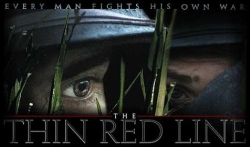
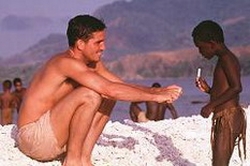
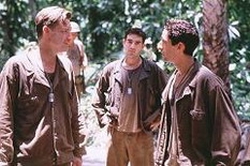
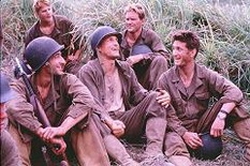
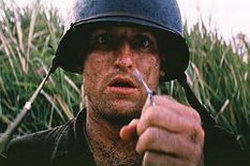
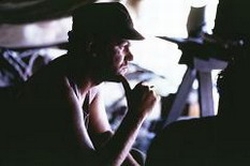
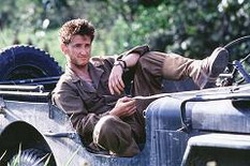
Info
Written by Pawel Stroinski,
translated for MainTitles
Original text on www.filmmusic.pl
